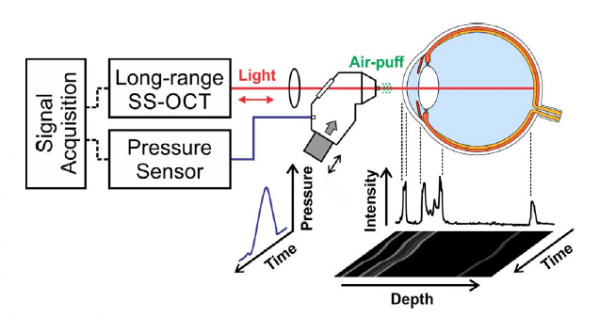Air-Puff-Induced Dynamics of Ocular Components Measured with Optical Biometry
Investigative Ophthalmology & Visual Science 2019 | Vol.60 | 1979-1986
Ewa Maczynska, Jagoda Rzeszewska-Zamiara, Alfonso Jimenez Villar, Maciej Wojtkowski, Bartlomiej J. Kaluzny, Ireneusz Grulkowski
Abstract:
PURPOSE. To analyze the dynamics of all optical components of the eye and the behavior of the eyeball under air-puff conditions in vivo. To determine the impact of the intraocular pressure (IOP) on the air-puff-induced deformation of the eye.
METHODS. Twenty eyes of 20 healthy subjects were included in this study. The dynamics of the ocular components, such as the cornea, the crystalline lens, and the retina, was measured by a prototype swept source optical coherence tomography biometer integrated with the air-puff system. The system allows to acquire a series of axial scans at the same location as a function of time with no transverse scanning. Several parameters were extracted from optical coherence tomography data. The IOP was measured using a Goldmann applanation tonometry. The measurements of the eyes were performed before and 2 hours after administration of IOP-reducing drops, namely, 0.2 % brimonidine tartrate.
RESULTS. There is a statistically significant correlation of corneal thickness, vitreous depth, and eye length with IOP. The deformation amplitudes of the cornea and the crystalline lens are inversely proportional to the IOP, but statistical significance is achieved only for the cornea. The crystalline lens is displaced without compression, and the return has the form of wobbling. The reduction of IOP level induces corresponding changes in the extracted parameters.
CONCLUSIONS. Optical biometry combined with air puff provides comprehensive information on the in vivo behavior of all ocular components, including the crystalline lens. Measurement of the axial length dynamics of during deformation enables correcting the deformation for eye retraction.



